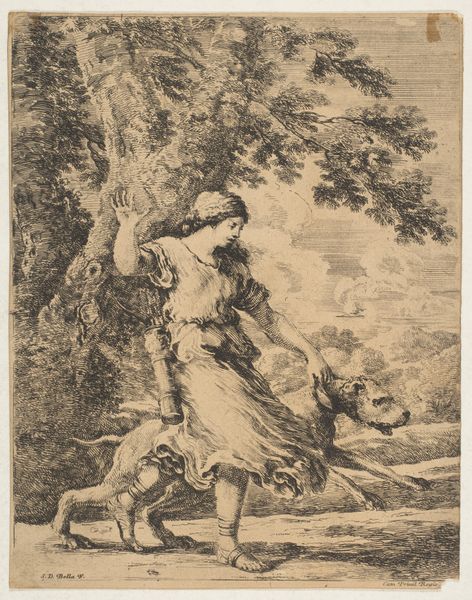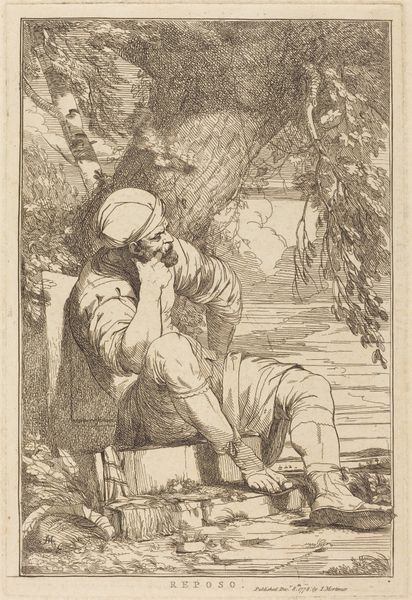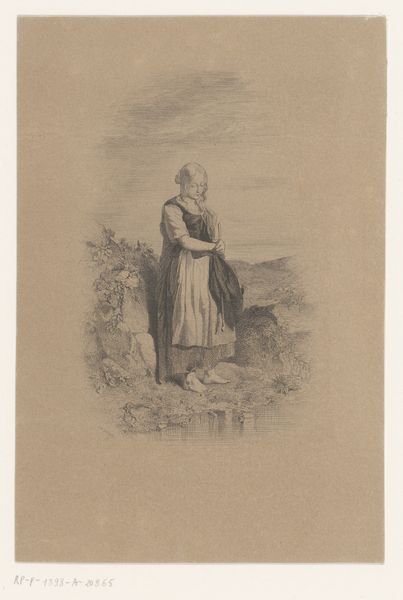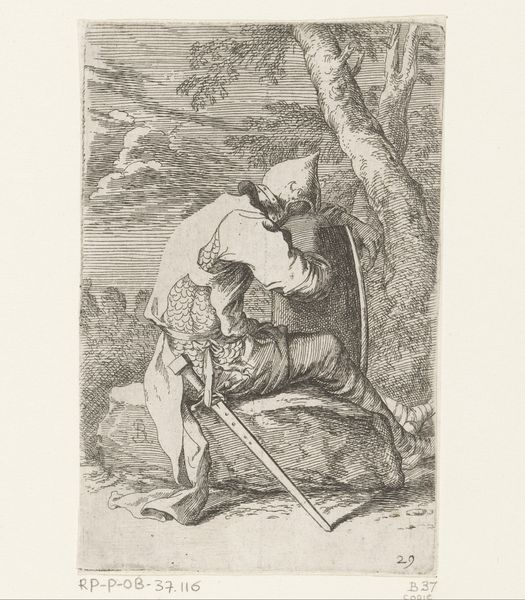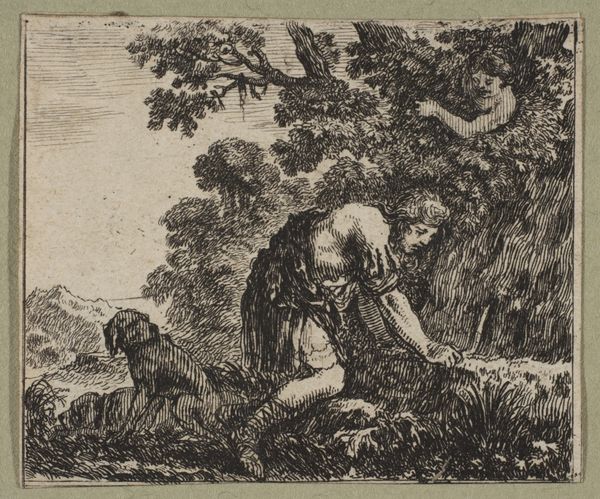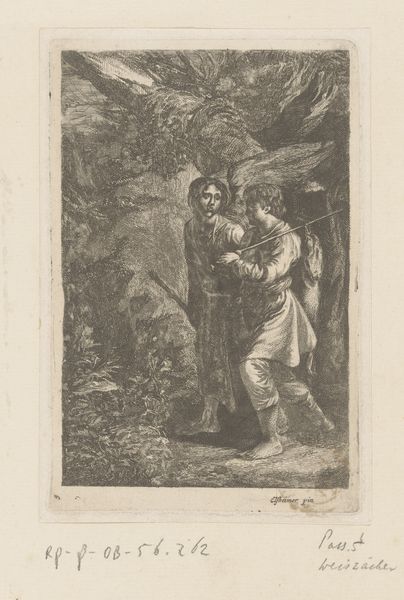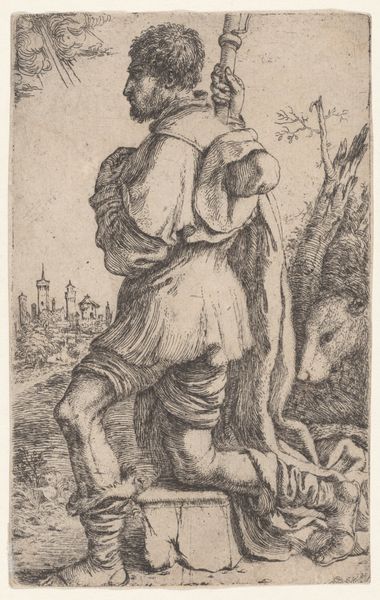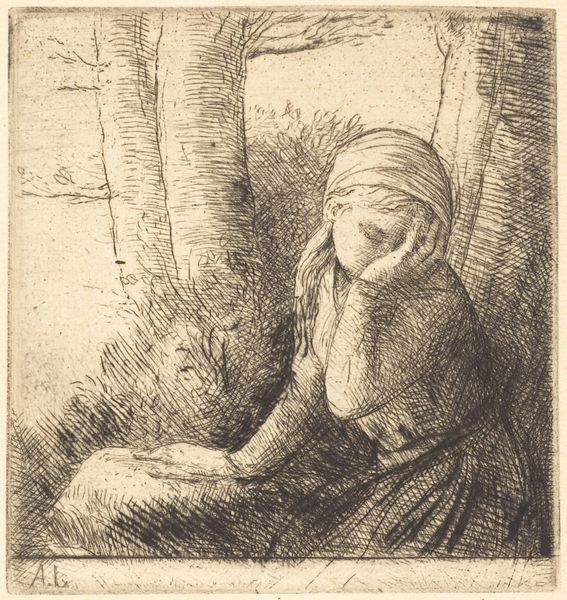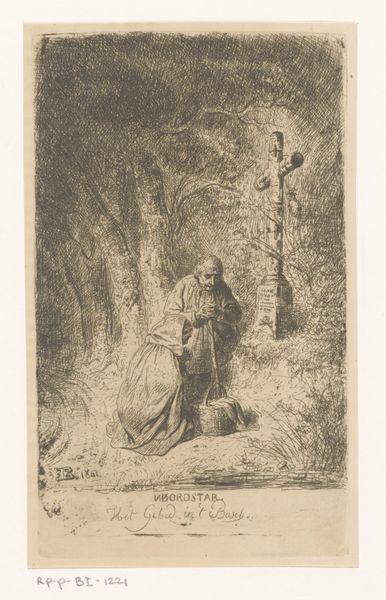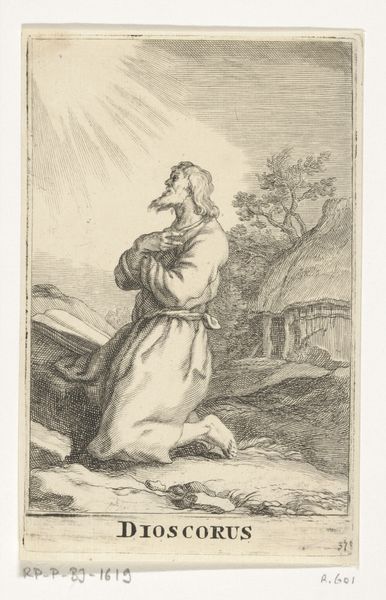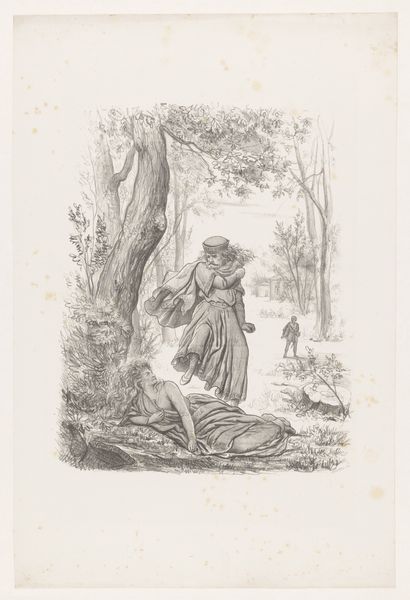
Dimensions: Plate: 4 13/16 x 3 7/8 in. (12.3 x 9.9 cm) Sheet: 10 5/8 x 7 1/8 in. (27 x 18.1 cm)
Copyright: Public Domain
Editor: This print, "Indian in an Ambush," created between 1860 and 1892 by Paul-Edme Le Rat, has such an interesting texture to it. It’s a flurry of etched lines. What jumps out at you? Curator: Immediately, the engraving grabs my attention as a product. Consider the labor involved. The tools, the physical act of cutting into the metal plate—this wasn’t just artistic expression, but skilled work. This connects to the tradition of printmaking as a medium of dissemination, allowing this narrative to reach a broad audience. Were these images readily available at the time? Editor: Good point! I imagine so. That makes me wonder, though: did the act of reproducing it dilute the artist's original intent? Curator: That's the crux of it. Reproduction changes the meaning. It turns art into a commodity. This image then circulates, shaped by markets and public taste. The “romanticism” of this scene masks a relationship rooted in conquest and, undoubtedly, exoticization, repackaged for a European audience through this technology of image production. Note how the detailed foliage contrasts with the hazier rendering of the background conflict, directing our gaze. Editor: So, it’s not just the subject, but the means by which the subject is portrayed that shapes the meaning? Curator: Precisely! Think about the resources that would have been accessible in that moment. This piece isn’t just a landscape with an “Indian in an ambush”; it's an artifact loaded with socio-economic context embedded in the production of a romantic scene. Editor: I never thought about landscape prints in terms of resource distribution. Thank you.
Comments
No comments
Be the first to comment and join the conversation on the ultimate creative platform.

